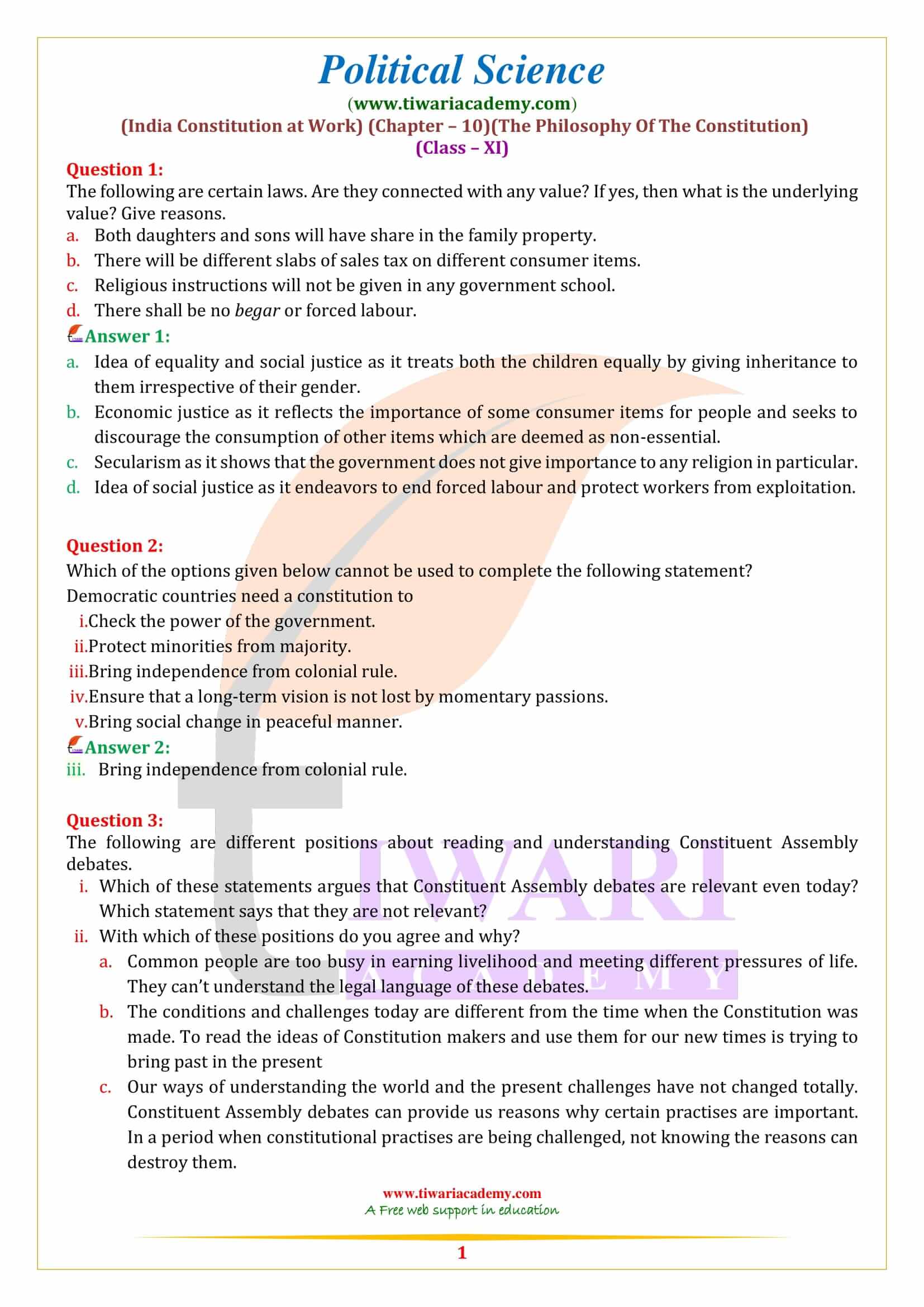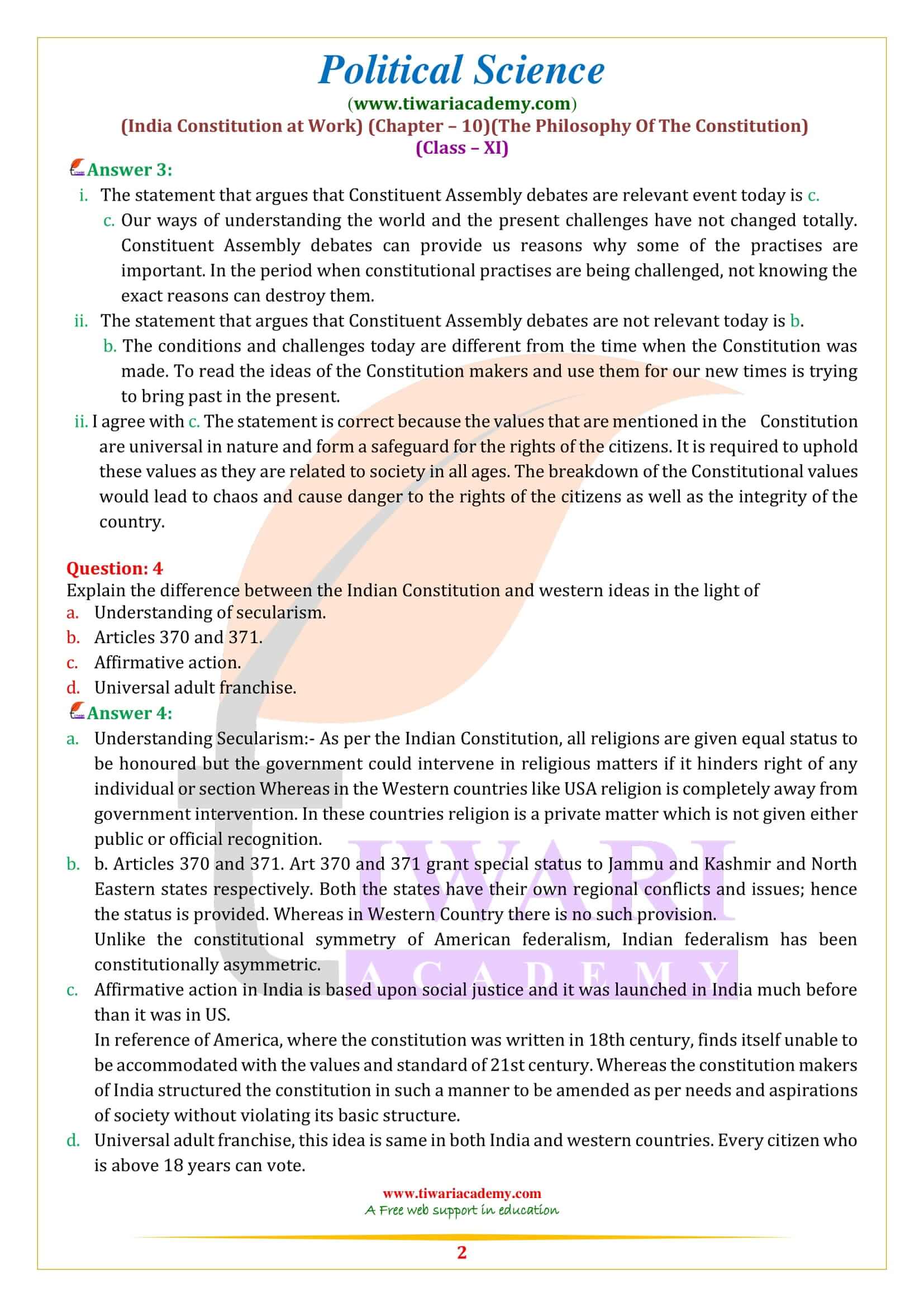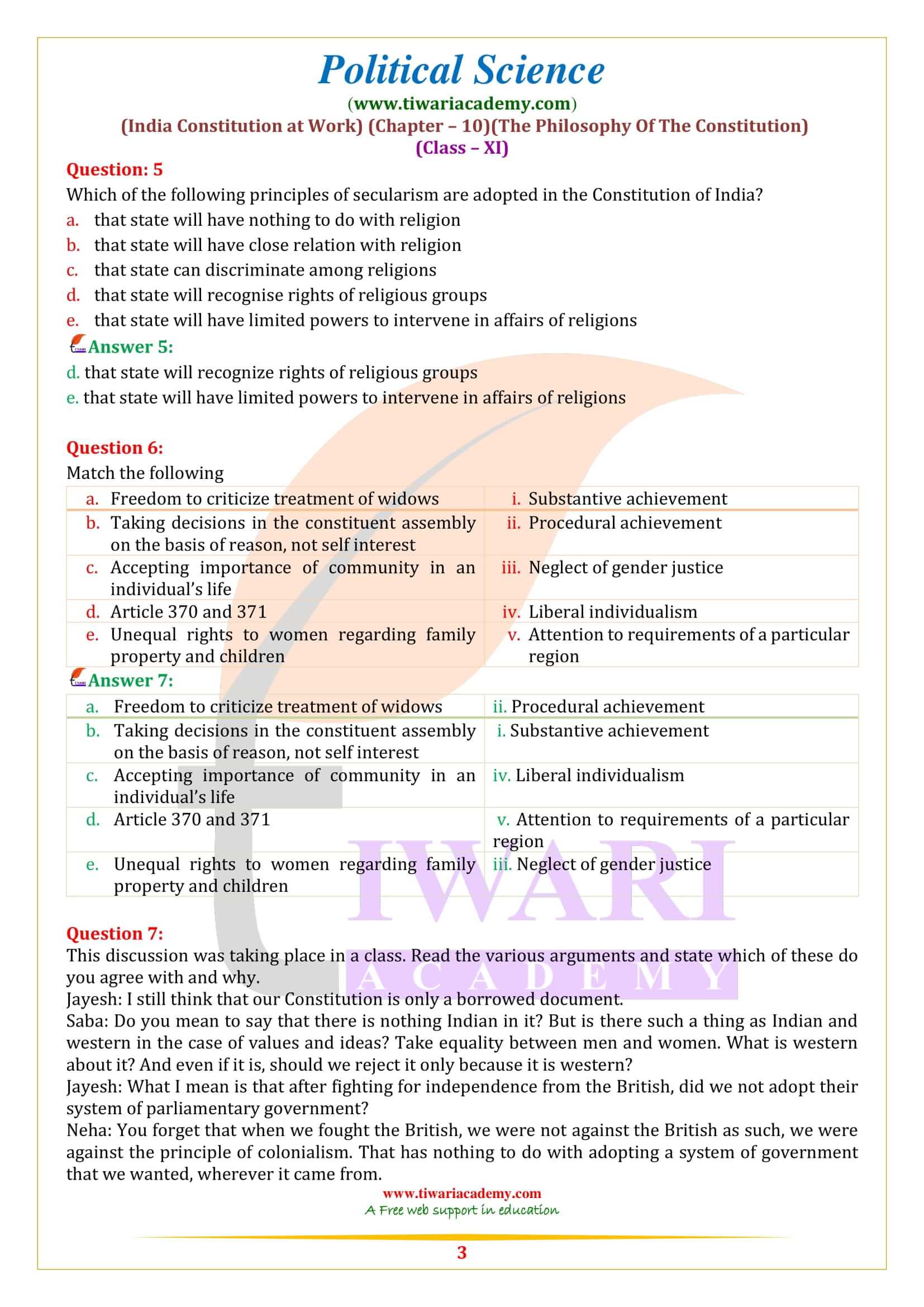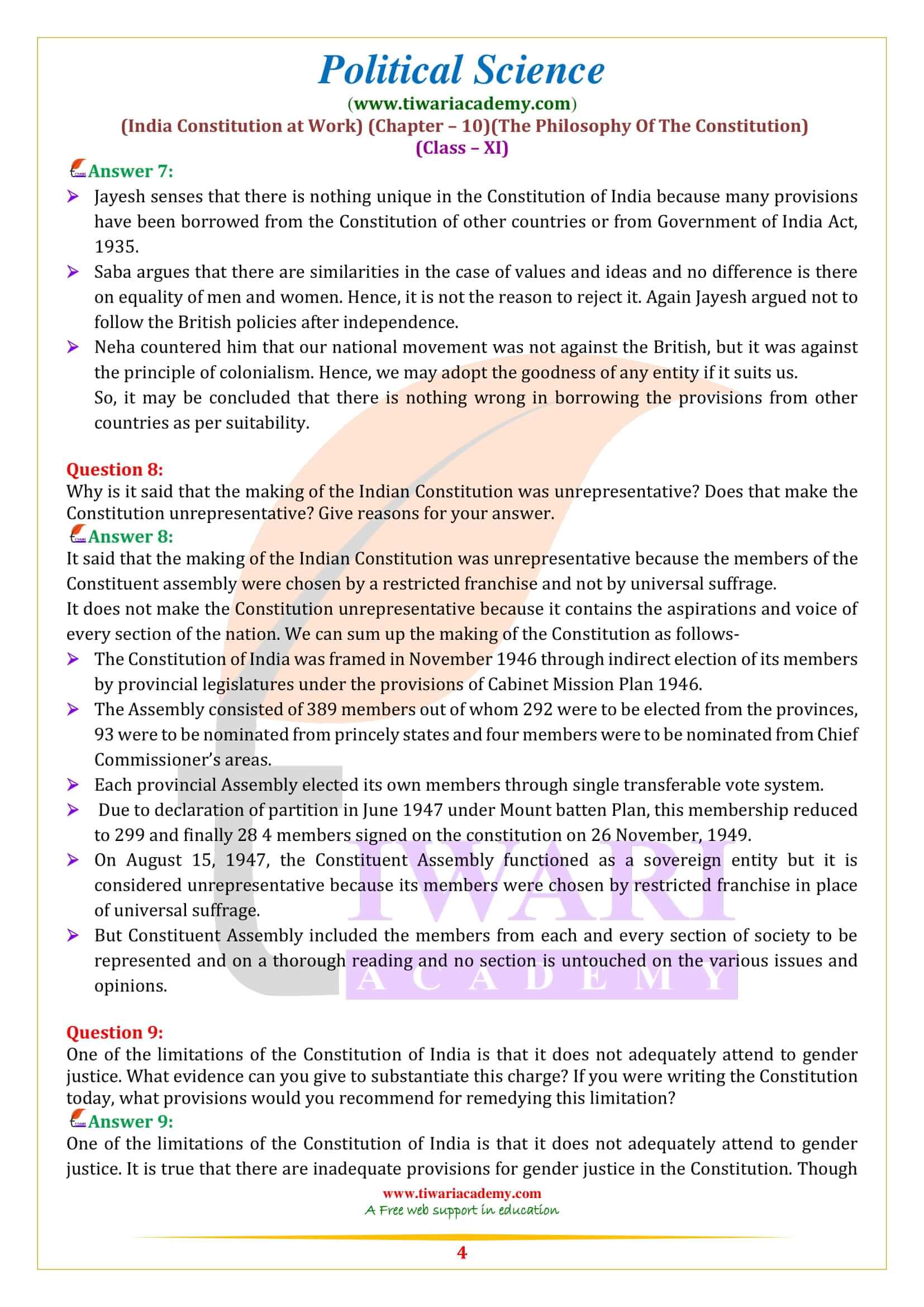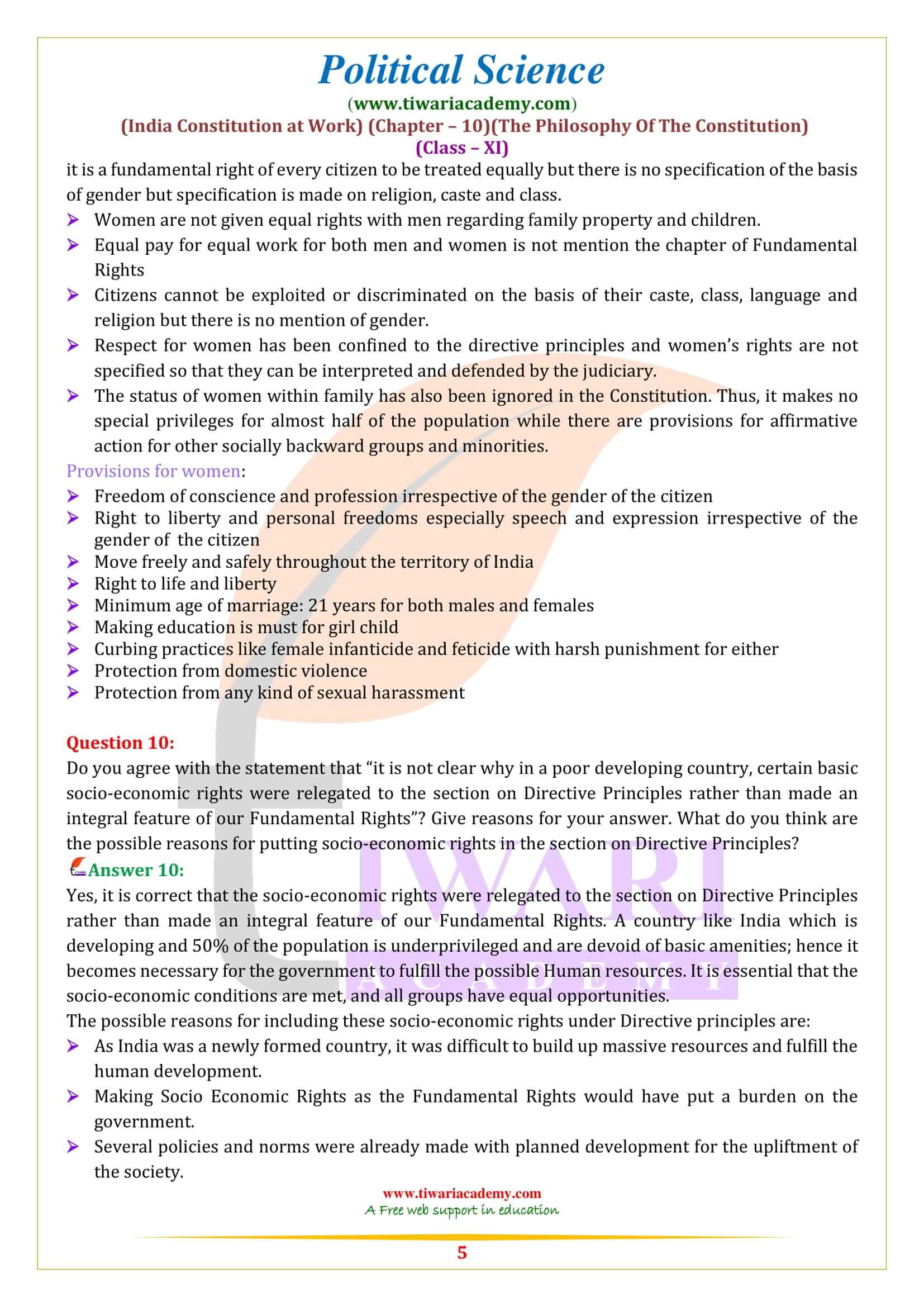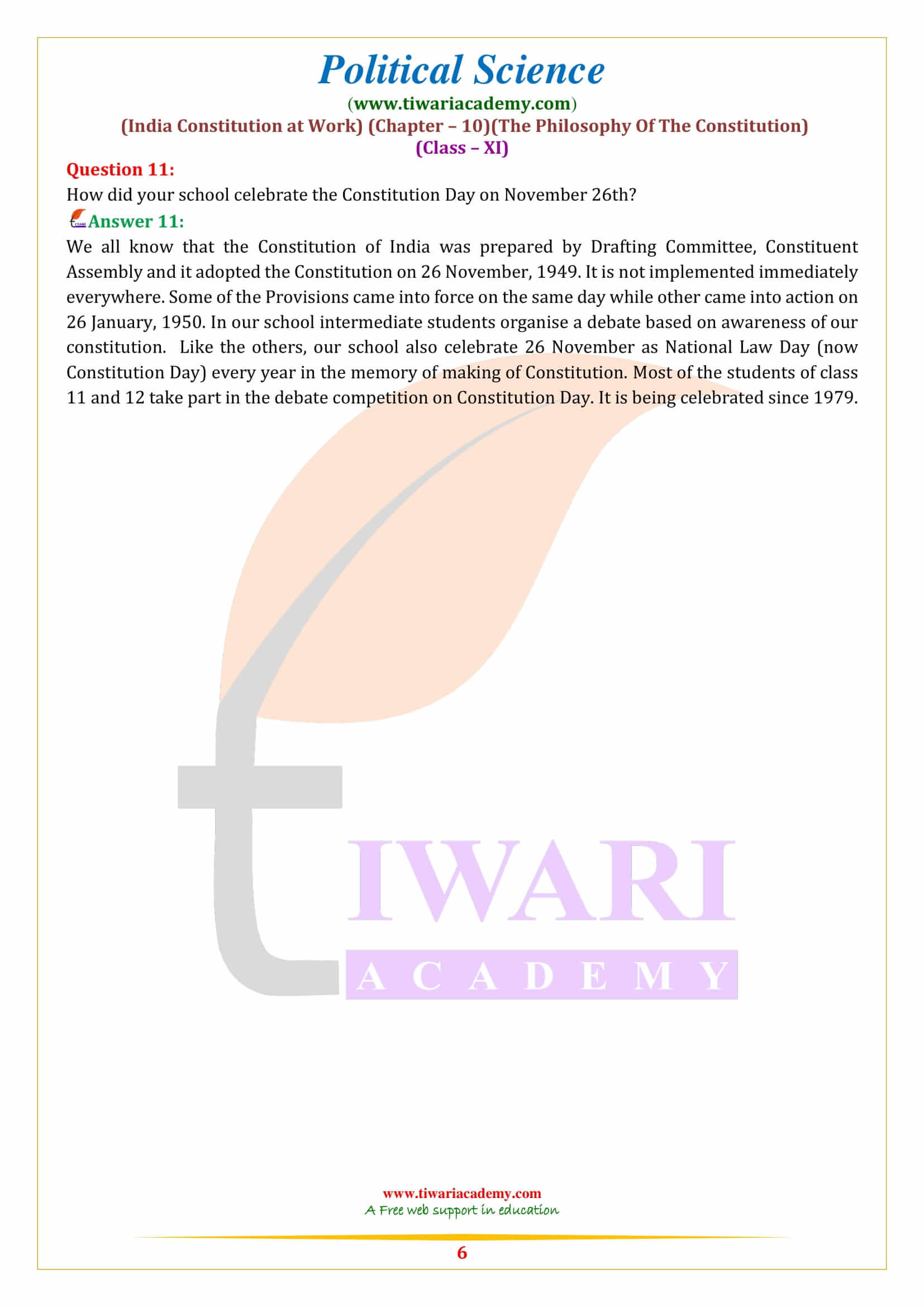NCERT Solutions for Class 11 Political Science Chapter 10 the Philosophy of the Constitution in English and Hindi Medium updated for new academic session 2024-25. All the questions given in end exercises of class 11 Political Science chapter 10 in Indian Constitution at Work are given here in simplified format.
NCERT Solutions for Class 11 Political Science Chapter 10
How did your school celebrate the Constitution Day on November 26th?
We all know that the Constitution of India was prepared by Drafting Committee, Constituent Assembly and it adopted the Constitution on 26 November, 1949. It is not implemented immediately everywhere. Some of the Provisions came into force on the same day while other came into action on 26 January, 1950. In our school intermediate students organize a debate based on awareness of our constitution. Like the others, our school also celebrate 26 November as National Law Day (now Constitution Day) every year in the memory of making of Constitution. Most of the students of class 11 and 12 take part in the debate competition on Constitution Day. It is being celebrated since 1979.
Why is it said that the making of the Indian Constitution was unrepresentative? Does that make the Constitution unrepresentative? Give reasons for your answer.
It said that the making of the Indian Constitution was unrepresentative because the members of the Constituent assembly were chosen by a restricted franchise and not by universal suffrage.
It does not make the Constitution unrepresentative because it contains the aspirations and voice of every section of the nation. We can sum up the making of the Constitution as follows:
- The Constitution of India was framed in November 1946 through indirect election of its members by provincial legislatures under the provisions of Cabinet Mission Plan 1946.
- The Assembly consisted of 389 members out of whom 292 were to be elected from the provinces, 93 were to be nominated from princely states and four members were to be nominated from Chief Commissioner’s areas.
- Each provincial Assembly elected its own members through single transferable vote system.
- Due to declaration of partition in June 1947 under Mount batten Plan, this membership reduced to 299 and finally 28 4 members signed on the constitution on 26 November, 1949.
- On August 15, 1947, the Constituent Assembly functioned as a sovereign entity but it is considered unrepresentative because its members were chosen by restricted franchise in place of universal suffrage.
- But Constituent Assembly included the members from each and every section of society to be represented and on a thorough reading and no section is untouched on the various issues and opinions.
Do you agree with the statement that “it is not clear why in a poor developing country, certain basic socio-economic rights were relegated to the section on Directive Principles rather than made an integral feature of our Fundamental Rights”? Give reasons for your answer. What do you think are the possible reasons for putting socio-economic rights in the section on Directive Principles?
Yes, it is correct that the socio-economic rights were relegated to the section on Directive Principles rather than made an integral feature of our Fundamental Rights. A country like India which is developing and 50% of the population is underprivileged and are devoid of basic amenities; hence it becomes necessary for the government to fulfill the possible Human resources. It is essential that the socio-economic conditions are met, and all groups have equal opportunities.
The possible reasons for including these socio-economic rights under Directive principles are:
- As India was a newly formed country, it was difficult to build up massive resources and fulfill the human development.
- Making Socio Economic Rights as the Fundamental Rights would have put a burden on the government.
- Several policies and norms were already made with planned development for the upliftment of the society.
One of the limitations of the Constitution of India is that it does not adequately attend to gender justice. What evidence can you give to substantiate this charge? If you were writing the Constitution today, what provisions would you recommend for remedying this limitation?
One of the limitations of the Constitution of India is that it does not adequately attend to gender justice. It is true that there are inadequate provisions for gender justice in the Constitution. Though it is a fundamental right of every citizen to be treated equally but there is no specification of the basis of gender but specification is made on religion, caste and class.
- Women are not given equal rights with men regarding family property and children.
- Equal pay for equal work for both men and women is not mention the chapter of Fundamental Rights
- Citizens cannot be exploited or discriminated on the basis of their caste, class, language and religion but there is no mention of gender.
- Respect for women has been confined to the directive principles and women’s rights are not specified so that they can be interpreted and defended by the judiciary.
- The status of women within family has also been ignored in the Constitution. Thus, it makes no special privileges for almost half of the population while there are provisions for affirmative action for other socially backward groups and minorities.
Provisions for women:
- Freedom of conscience and profession irrespective of the gender of the citizen
- Right to liberty and personal freedoms especially speech and expression irrespective of the gender of the citizen
- Move freely and safely throughout the territory of India
- Right to life and liberty
- Minimum age of marriage: 21 years for both males and females
- Making education is must for girl child
- Curbing practices like female infanticide and feticide with harsh punishment for either
- Protection from domestic violence
- Protection from any kind of sexual harassment.
